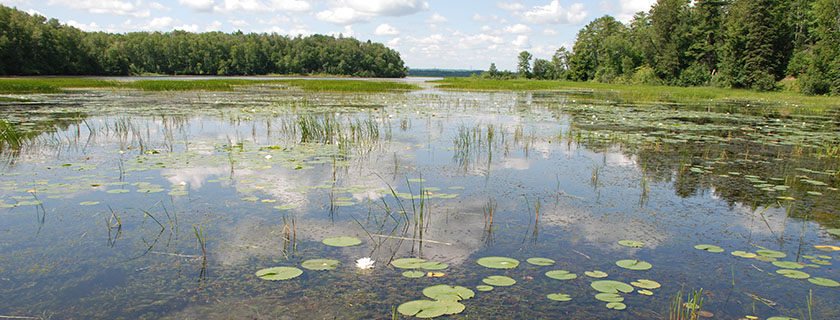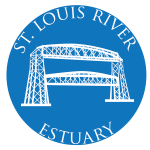St. Louis River Estuary
The St. Louis River estuary runs along the western edge of Lake Superior on the border between Minnesota and Wisconsin. Situated between the urban areas of Duluth, Minnesota, and Superior, Wisconsin it is home to the country’s busiest and largest bulk inland port. Boasting unique wetland and wildlife habitats, the setting is often described as a wilderness in the heart of an urban area.
Threats
Historically, the St. Louis River estuary area was a center for lumber and paper production and, unfortunately, has a long history of environmental degradation and pollution. Many years of toxic discharges have led to high concentrations of contaminants in the sediments, water column, plants, and wildlife. Today, the St. Louis River estuary is listed as a U.S. Environmental Protection Agency Area of Concern (AOC), and many partners are working to remedy the environmental degradation that has impaired the area’s ability to provide ecosystem services critical to fish and wildlife and adjacent coastal communities.
Objectives
NOAA has identified the following objectives for the St. Louis River estuary habitat focus area:
- Address loss of fish and wildlife habitat through the funding of targeted restoration projects and the delivery of data, products, and services throughout the estuary to support delisting of the AOC
- Enhance resilience by reducing the impact of flooding through improved planning and water management strategies
- Increase coastal tourism, access, and recreational opportunities
- Provide opportunities for training, education, and outreach
Details about the objectives and specific actions NOAA is implementing can be found in the Habitat Focus Area Implementation Plan.
Collaboration
Because the St. Louis River is a shared (regional) tributary to Lake Superior, NOAA works closely with many partner agencies (federal, state, local, tribal, and others) in St. Louis River estuary as part of a collaborative watershed approach to conservation and restoration. We participate in the interagency Great Lakes Restoration Initiative and provide funding for the Minnesota and Wisconsin Coastal Programs, as well as the Lake Superior National Estuarine Research Reserve.
Accomplishments
- Restored 1,000 feet of shoreline and created 3 acres of spawning habitat in Chambers Grove
- Removed 115,000 cubic yards of marine debris from Radio Tower Bay
- Developed a Public Access and Cultural Guidebook for the St. Louis River Estuary
- Restored nearly 155 acres of habitat and stabilized two-thirds of a mile of shoreline on the Wisconsin Point peninsula


